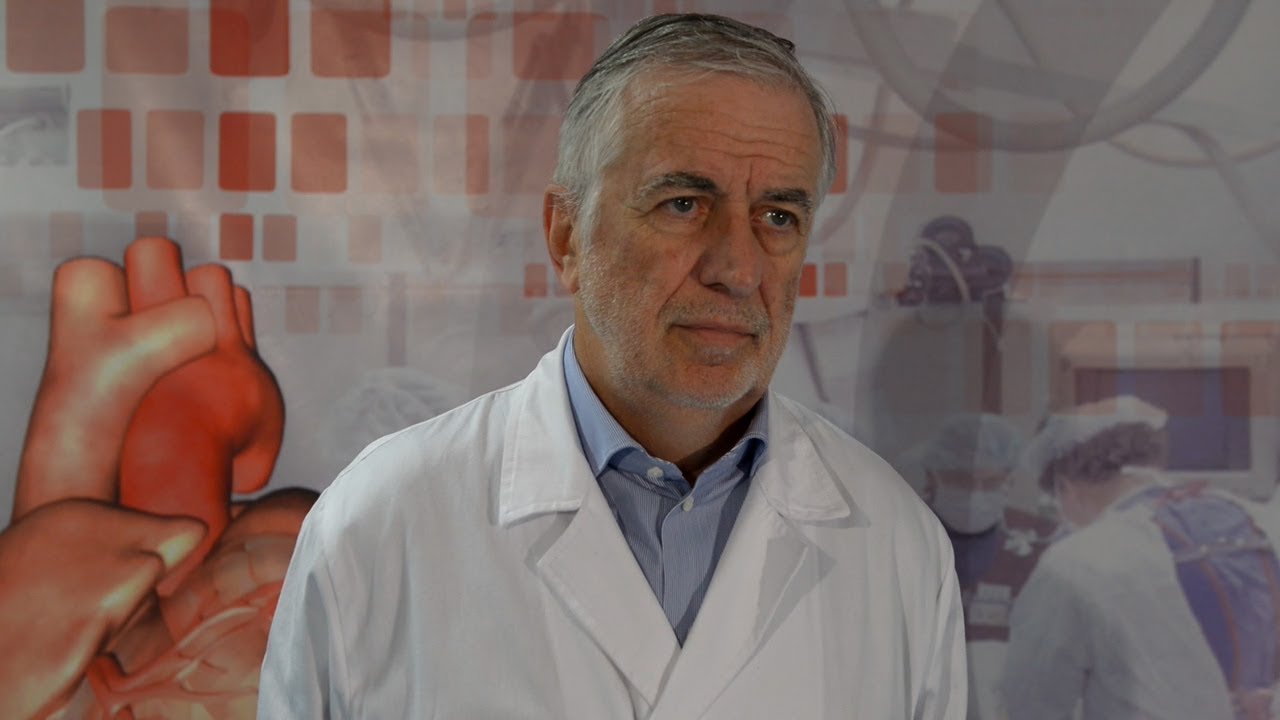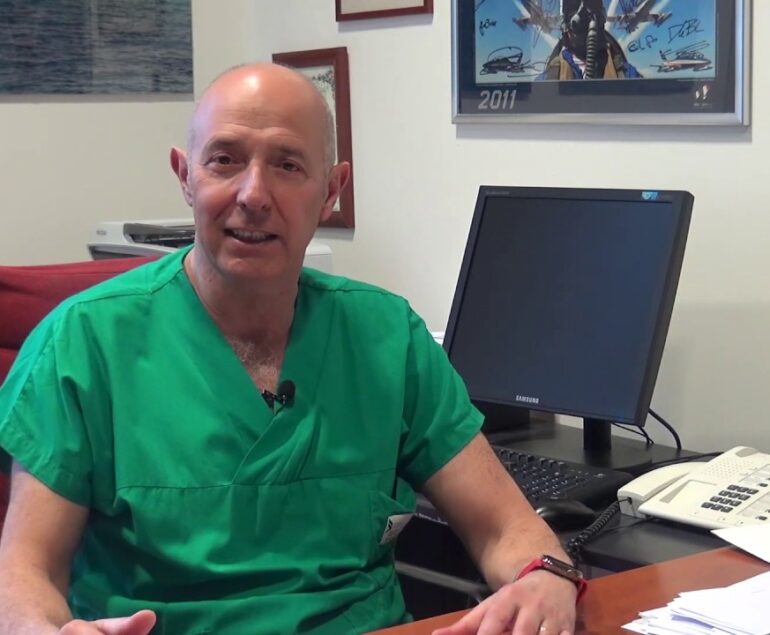“The “no” of Vittorio Pengo for proper treatment.”
Interview with Prof. Vittorio Pengo
By Giuseppe Riggio and Eros Barantani
“Taking good care is knowing well”. When testing the effectiveness and safety of new anticoagulants, there shall be a pre-determined route whereby they will be used successively in the following diseases: starting from the prevention of venous thromboembolism in patients with hip or knee implants (high risk), then goes to the treatment of venous thromboembolism in general and then to primary and secondary prevention of atrial fibrillation; new anticoagulant drugs are not all the same, but all have proven to be effective (not inferior) to the reference drug (warmeal). In order to prescribe these new medicines, reference must be made to a checklist, i.e. all the questions we need to make to patients and all examinations to be prescribed before starting treatment; their proper use depends on the knowledge of the prescriber. Good knowledge of the medicines that are being used is an essential requirement. Side effects linked to unclear or incorrect requirements were described as early as they were used. For example, people with kidney or hepatic function problems, those with low body weight for whom an excessive dose is required; for pharmacogenetics, we do not yet have data in the hands of new medicines. We know that their plasma concentration from some factors that may affect absorption such as protein g, or their metabolism such as epatic cytochrome P450 and its variations, but there are still no ad hoc studies; however, it should be stressed that, given the high number of patients using new anticoagulants worldwide, we have no negative data; one of the concerns is adherence to, and persistence to, treatment; a patient treated with warfarin shall, on average, monitor the condition of anticoagulation every three to four weeks and may be called upon to take the medicine correctly; with new medicines, laboratory testing is not foreseen and therefore the patient needs to be educated in order to ensure that the medicine is properly taken.
The triple association was an exclusion criterion in the registration studies and those few patients who have entered have been assessed, (two antiaggregating medicines and one anticoagulant drug) have around 50 % more of haemorrhagic risk. It is important to be very cautious; if the patient is carrying a mechanical prosthesis and has to make life anticoagulants and is subjected to coronary stent positioning, double anti-aggregation is necessary; in any case, new anticoagulants are not mentioned in the mechanical implants as a study has been stopped due to lack of efficacy; if there is a need to use triple antithrombotic therapy, it is better to use an unmedicated stent rather than medicated so that the anti-aggregation is shorter, it is better to use the procedure by radial rather than femoral means to avoid major bleeding. In addition, if triple therapy is used for non-high-risk atrial fibrillation, it is better to use a low dose of the anticoagulant drug that the patient is taking and use aggregating agents that are not very haemorrhagic such as clopidogrel. This is still a very insidious ground and it is difficult to take decisions; caution, risk assessment, reduction of anticoagulant treatment or even remove it; three medicines together pose a much higher risk than double anti-aggregation alone: with warmeal but also with new anticoagulants, haemorrhages are more frequent. Assessing the patient’s characteristics, haemorrhagic risk varies from patient to patient, talking with patients about this is not easy, the guidelines taken into account are not enough, treatment needs to be personalised.
Very debated chapter: the TIA is a sudden brain ischaemic focal episode with loss of force or sensitivity of an artle or vision, TIA is only the one that has a response to the TAC or cerebral NMR, there are forms of transient ischaemic attacks that are not linked to brain ischaemic events.
In the elderly, the brain atrophy or hypertensive crisis, where the transient attack is not necessary connected to a brain ischaemic attack.
Doctors ultimately use antiaggregating therapy, but if we are sure that there is only temporary turmoil, loss of sensitivity or hemicrania with relative temporary hypoinflow brain inflow (comitology hemicrania); in such cases, the clinical situation that led to the alteration rather than giving an anti-aggregating drug should be treated; if, on the other hand, a patient has a transient ischaemic attack and discovery of unknown atrial fibrillation, then prevention with anticoagulants would still be done; there are cerebral occlusive forms that are not linked to thrombolic occlusive phenomena, sometimes determined by a hypertrophic wall such as hypertension and diabetes. The wall of the tank has no thrombotic occlusion but the hypoinflow is caused by the thickening of the wall of the tank; in this case, they should be treated well, hypertension and diabetes; aspiration can also be given, but pathogenesis is linked to non-thrombotic cerebral occlusive mechanisms.
It is absolutely necessary to differentiate venous thrombosis such as pulmonary embolism from arterious (coronary) thrombosis. Melle veins form thrombes rich in platelet fibrin, there are platele-rich clots in coronary disease; a full anticoagulant drug dosage is used in lung embolism, while antiaggregants are also used in coronary diseases and a much lower anticoagulant dosage is given: for example, riaroxaban is used at a dosage of 20 mg per day (15 + 15 mg in acute phase) while acute coronary syndromes use 2.5 mg per day; therefore, in acute coronary disease a certain benefit can bring it to a low dose.
This chapter is not yet fully clear for experts. The more frequent multi infartical dementia in the fibrillant than in the unfibrillant but it is not so sure that this is the case; there are some studies where it was found to be more prevalent in younger people (where it should not happen) than in older people. It is evocative that it may happen if microthrombes are formed in the ear, which then create problems at brain level, but there is no certainty. The closure or binding of the ear should be kept in mind in some situations; there are various ear oclusion techniques, where in more than 90 % of cases thrombes are formed and then embodied in the brain. This is due to the fact that this roofing of the atrio contains microcaverne where the blood flow can stagnate in the presence of atrial fibrillation and thus give rise to the formation of red clots that can be prevented by the anticoagulant; surgical closure also exists when the heart is opened or the transthoracic closure through the thorax in thoracoscopy by placing a lazo species on the tip of the catheter, identifying the ear and thus choking it; this mini-surgical technique could be useful in some patients, but if there is a great risk of strokes (possibly already occurred in the past) and bleeding risk.
No, in the mechanical valvolar implants, no in the atbrillation of valvolar with mitralal stenosis, is not mentioned either in these two situations. Then, one in the fourth or fifth stage renal insufficiency, these medicines are removed by kidney and thus a lot of attention; a lot of caution should be placed in moderate kidney failure (30-50 ml/min clearance creatinine) using a reduced dosage. No in the patient who does not ensure good compliance. Many doubts as to whether the patient has cognitive disorders and is not followed by others; these medicines have a very short half-life and therefore the patient risks being unprotected in the event of non-recruitment even for a short period of time; old anticoagulants still have space in patients with severe chronic kidney failure: warmeal is indicated because it is not excreted through kidney but only through liver metabolism, in patients with little or no adhesion to use warmeal, and so in mitraline stenosis and mechanical valves; situations not currently covered by these new medicines.


